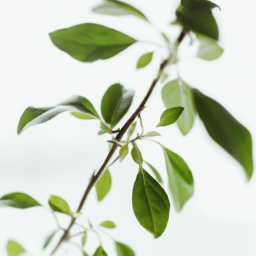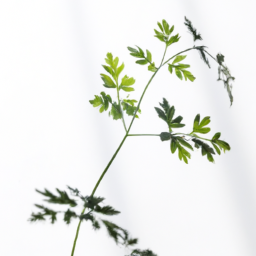
Are you a plant lover looking for the perfect addition to your sun-drenched garden? Look no further than the direct sunlight plant! With its ability to thrive in the brightest of conditions, this type of plant is a must-have for any sun-soaked space. Whether you have a rooftop garden, a balcony, or simply a sunny spot in your backyard, these plants will not only survive but flourish in direct sunlight. In this blog post, we will explore the fascinating world of direct sunlight plants, their unique characteristics, and how to care for them to ensure they reach their full potential. So, let’s dive in and discover the wonders of these sun-loving beauties!
Importance of Direct Sunlight for Plant Growth
Introduction
Plants are remarkable organisms that rely on sunlight for their growth and survival. Direct sunlight plays a crucial role in the photosynthesis process, which is the primary source of energy for plants. This article will explore the importance of direct sunlight for plant growth and provide you with a step-by-step guide on how to ensure your plants receive adequate sunlight for optimal development.
The Role of Sunlight in Photosynthesis
Photosynthesis is the process by which plants convert light energy into chemical energy, enabling them to produce glucose and oxygen. Direct sunlight is essential for photosynthesis to occur efficiently. The sun’s rays contain different wavelengths, including visible light, which is crucial for plants. Within the leaves of plants, specialized cells called chloroplasts contain a pigment called chlorophyll that absorbs light energy. This energy is then used to convert carbon dioxide and water into glucose and oxygen.
Without direct sunlight, the photosynthesis process is hindered, leading to stunted growth and weakened plants. Insufficient sunlight can result in pale or yellowish leaves, reduced flower production, and overall poor plant health. Therefore, it is vital to understand the specific light requirements of different plants and provide them with the appropriate amount of direct sunlight.
Understanding Plant Light Requirements
Different plant species have varying light requirements. Some plants thrive in full sun, while others prefer partial shade. It is crucial to know the specific light needs of your plants to ensure their optimal growth. Here are three common categories of plant light requirements:
1. Full Sun: Plants that require full sun need at least six hours of direct sunlight every day. These plants typically have thick, waxy leaves that can withstand intense sunlight and heat. Examples of full sun plants include roses, tomatoes, and sunflowers.
2. Partial Shade: Plants that prefer partial shade thrive in dappled sunlight or a few hours of direct sunlight combined with indirect light. These plants can tolerate some shade during the day. Examples of partial shade plants include hostas, ferns, and impatiens.
3. Shade: Shade-loving plants can thrive in low light conditions and prefer indirect or filtered sunlight. These plants typically have large, thin leaves that allow them to capture as much light as possible. Examples of shade plants include ferns, begonias, and peace lilies.
Providing Adequate Sunlight for Your Plants
To ensure your plants receive adequate sunlight, follow these steps:
1. Assess the Light Conditions: Observe the area where you plan to grow your plants. Determine how much direct sunlight the area receives throughout the day. Is it a full sun, partial shade, or shade location? Understanding the light conditions will help you select the right plants for the area.
2. Choose Appropriate Plants: Select plants that match the light conditions of your chosen location. Consider the specific light requirements of each plant species and choose accordingly. This will maximize the chances of successful growth and vibrant plant health.
3. Positioning and Sun Exposure: Once you have chosen the right plants, position them in the garden or containers to optimize their sun exposure. Full sun plants should be placed in areas that receive the most direct sunlight. Partial shade plants can be positioned where they receive a combination of direct and indirect light. Shade plants should be placed in areas with minimal direct sunlight.
4. Monitor and Adjust: Regularly monitor the amount and quality of sunlight your plants receive. Observe any changes in their growth and appearance. If you notice signs of inadequate sunlight, such as yellowing leaves or stunted growth, consider adjusting their positioning or providing supplemental light sources like grow lights.
5. Protect from Harsh Sunlight: While direct sunlight is essential, some plants may require protection from intense midday sun, especially during hot summer months. Consider using shade cloth or providing temporary shade structures to shield your plants from excessive heat and sunburn.
Conclusion
Direct sunlight is vital for plant growth and plays a crucial role in the photosynthesis process. Understanding the specific light requirements of your plants and providing them with adequate sunlight will promote healthy growth and vibrant foliage. Remember to assess the light conditions, choose appropriate plants, position them correctly, monitor their sunlight exposure, and protect them from harsh sunlight when necessary. By following these steps, you can ensure your plants thrive and flourish under the nurturing power of direct sunlight.

Best Plants That Thrive in Direct Sunlight
Gardening enthusiasts often face the challenge of finding the perfect plants that can withstand direct sunlight. Fortunately, there are several stunning plant varieties that thrive in such conditions. In this article, we will explore some of the best plants that can flourish in direct sunlight and provide you with a step-by-step guide on how to care for them.
1. Succulents
Succulents are known for their ability to store water in their leaves, making them a great choice for direct sunlight conditions. These hardy plants come in various shapes, colors, and sizes, adding a touch of beauty to any garden or indoor space.
When planting succulents, ensure that you choose a well-draining soil mix to prevent waterlogging. Place them in a location where they can receive at least six hours of direct sunlight each day. Water your succulents sparingly, allowing the soil to dry out completely between watering sessions. Overwatering can lead to root rot and other issues.
Furthermore, succulents are low-maintenance plants that require minimal care. Regularly remove dead leaves and provide them with occasional fertilization during the growing season. With proper care, your succulents will thrive and bring a touch of natural beauty to your surroundings.
2. Lavender
Lavender is a fragrant and versatile plant that thrives in direct sunlight. Its vibrant purple flowers and soothing scent make it a popular choice for gardens, borders, and even container planting.
When planting lavender, choose a well-draining soil mix with a slightly alkaline pH. Ensure that the location receives at least eight hours of direct sunlight daily. Lavender plants are drought-tolerant, so avoid overwatering them. Water deeply but infrequently, allowing the soil to dry out between watering sessions.
Pruning is essential for lavender plants to maintain their shape and promote healthy growth. After the flowering season, trim back the spent flowers and prune any leggy or woody growth. This will help the plant produce new growth and maintain its compact form.
Lavender is not only a beautiful addition to your garden but also attracts pollinators like bees and butterflies, making it a delightful sight to behold.
3. Sunflowers
Nothing screams summer quite like the vibrant and cheerful sunflowers. These tall and majestic plants are a symbol of happiness and are perfect for gardens, borders, or as cut flowers.
When planting sunflowers, choose a location that receives full sun exposure throughout the day. Sunflowers require well-draining soil enriched with organic matter. Plant the seeds directly into the ground or in large containers, ensuring they have enough space to grow and spread their roots.
Water your sunflowers regularly, especially during dry spells. They require consistent moisture to thrive. However, be cautious not to overwater, as excessive moisture can lead to root rot. Mulching around the base of the plants can help retain moisture and suppress weed growth.
As sunflowers grow, they may require staking to support their tall stems. Use bamboo stakes or other suitable materials to prevent the plants from bending or breaking under their weight.
Once the sunflowers bloom, their vibrant yellow petals will bring a ray of sunshine to your garden, attracting birds and other wildlife.
In conclusion, selecting plants that can thrive in direct sunlight is crucial for a successful garden. Succulents, lavender, and sunflowers are just a few examples of plants that can withstand and thrive in such conditions. By following the step-by-step guidelines provided for each plant, you can create a beautiful and vibrant garden that will be the envy of all.

How to Protect Plants from Excessive Direct Sunlight
Welcome to the expert guide on protecting plants from excessive direct sunlight. As an expert in the field, I will provide you with valuable insights and step-by-step instructions to ensure your plants thrive even under the scorching sun. Let’s dive in!
Understanding the Impact of Direct Sunlight on Plants
Direct sunlight can have both positive and negative effects on plants. While sunlight is essential for photosynthesis, excessive exposure can lead to various issues such as sunburn, wilting, and dehydration. It’s crucial to strike a balance and protect your plants from the harmful effects of intense sunlight.
Here are some effective strategies to safeguard your plants:
1. Provide Adequate Shade
Creating shade is one of the simplest and most effective ways to protect your plants from excessive direct sunlight. You can use various methods to provide shade, depending on the size and location of your plants.
One option is to use shade cloth or netting, which can be easily attached to stakes or frames to create a protective barrier. Another option is to utilize existing structures such as trees or buildings to cast shade on your plants during the hottest parts of the day.
Additionally, you can consider using umbrellas or canopies for potted plants or smaller garden areas. These portable shade solutions allow you to adjust the shade as needed throughout the day.
2. Implement Mulching Techniques
Mulching is an effective technique to regulate soil temperature and moisture levels, providing a protective layer for your plants’ roots. By applying a layer of organic mulch, such as wood chips or straw, you can create insulation that shields the roots from excessive heat.
The mulch acts as a barrier, reducing water evaporation and keeping the soil cool. It also helps to prevent weed growth, which can compete with your plants for water and nutrients. Ensure the mulch layer is around 2-3 inches thick and avoid piling it against the plant stems to prevent rotting.
Remember to replenish the mulch periodically, especially after heavy rainfall or when it starts to decompose, to maintain its effectiveness.
3. Optimize Watering Practices
Proper watering is crucial in protecting plants from excessive direct sunlight. When exposed to intense heat, plants can quickly lose moisture, leading to dehydration and wilting. It’s essential to establish a watering routine that meets your plants’ specific needs.
Start by understanding the water requirements of your plants. Some plants prefer consistently moist soil, while others tolerate drier conditions. Grouping plants with similar water needs together can help streamline your watering efforts.
Water your plants deeply and less frequently to encourage deep root growth. This allows the roots to access water from deeper soil layers, making them more resilient to drought conditions. Consider investing in drip irrigation systems or soaker hoses to deliver water directly to the roots while minimizing evaporation.
Furthermore, it’s best to water your plants early in the morning or late in the evening when the sun’s intensity is lower. This prevents water droplets on the leaves from acting as magnifying glasses, potentially causing sunburn.
Regularly monitor the moisture levels in the soil and adjust your watering schedule accordingly. Be cautious not to overwater, as this can lead to root rot and other fungal diseases.
By following these steps and implementing these strategies, you can effectively protect your plants from excessive direct sunlight. Remember to observe your plants closely and make adjustments as needed to ensure their optimal growth and health. Happy gardening!
In Summary
If you’re a plant lover like me, you’ve probably wondered which plants can thrive in direct sunlight. Well, look no further because I have the perfect list of sun-loving plants that will brighten up any sunny corner of your home or garden! Direct sunlight can be a bit intense for some plants, but there are plenty of varieties that actually thrive in these conditions.
One of the best direct sunlight plants is the succulent family, which includes popular plants like aloe vera and jade plants. These beauties have adapted to arid environments and love soaking up the sun’s rays. Another great option is the marigold, a vibrant and easy-to-grow flower that can handle the heat. Its bright yellow or orange blooms will add a pop of color to your garden all summer long. Additionally, herbs like rosemary and thyme are perfect for sunny spots and can even be used in your cooking. So, if you have a sunny windowsill or a bright outdoor area, consider adding these direct sunlight plants to your collection and watch them thrive under the sun’s warm embrace!
Let me leave you with some FAQs:
Q1: What is a direct sunlight plant?
A1: A direct sunlight plant refers to a type of plant that thrives in bright, direct sunlight for a significant portion of the day. These plants have evolved to tolerate the intense heat and light of the sun and require several hours of direct sunlight to grow and flourish.
Q2: Which plants are suitable for direct sunlight?
A2: There are several plants that are well-suited for direct sunlight conditions. Some popular examples include succulents like aloe vera and cacti, flowering plants like marigolds and sunflowers, as well as herbs like rosemary and thyme. It’s important to choose plants that are specifically labeled as “full sun” or “sun-loving” to ensure they can thrive in direct sunlight.
Q3: How much sunlight do direct sunlight plants need?
A3: Direct sunlight plants typically require at least six hours of direct sunlight each day to maintain their health and promote optimal growth. However, it’s important to note that certain plants may have varying sunlight requirements, so it’s always best to check the specific care instructions for the plant you’re interested in.
Q4: Can direct sunlight plants be grown indoors?
A4: While direct sunlight plants are primarily suited for outdoor cultivation, some species can be grown indoors if provided with ample sunlight. Placing them near a south-facing window or using artificial grow lights can help mimic the intensity of direct sunlight. However, it’s essential to monitor the plant closely and ensure it receives the necessary light levels to thrive.
Q5: How should I care for direct sunlight plants?
A5: To care for direct sunlight plants, it’s crucial to provide them with the right conditions. In addition to adequate sunlight, these plants generally require well-draining soil, regular watering (allowing the soil to dry out between watering sessions), and occasional fertilizing during the growing season. It’s also important to protect them from extreme heat and provide appropriate shelter during harsh weather conditions.
Dr. Olivia Green is a botanist with over two decades of experience in indoor plant cultivation. She holds a Ph.D. in Plant Biology and has dedicated her career to researching plant behavior in controlled environments. Dr. Green is passionate about helping plant enthusiasts master the art of indoor gardening through her extensive knowledge and practical insights.


